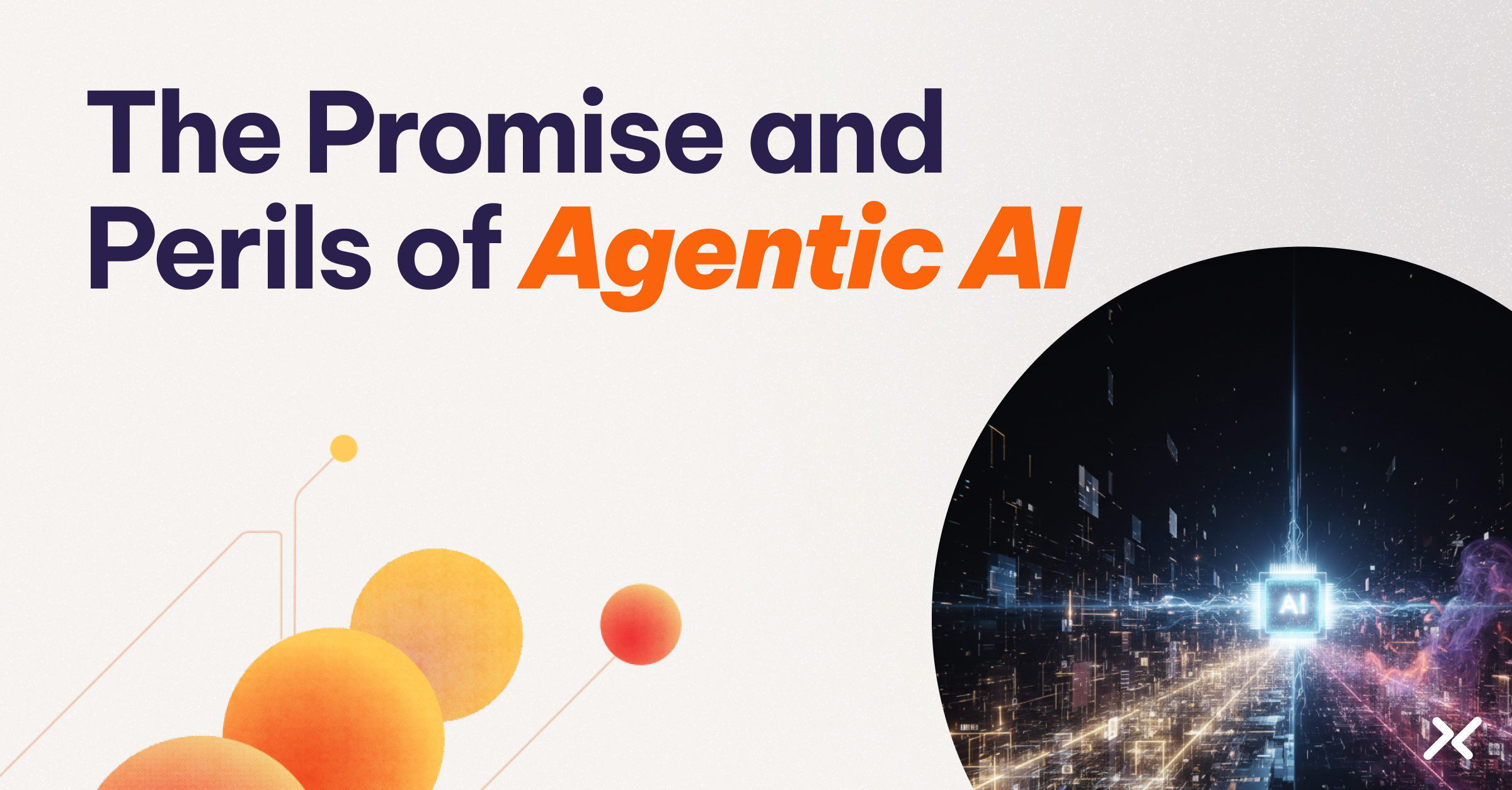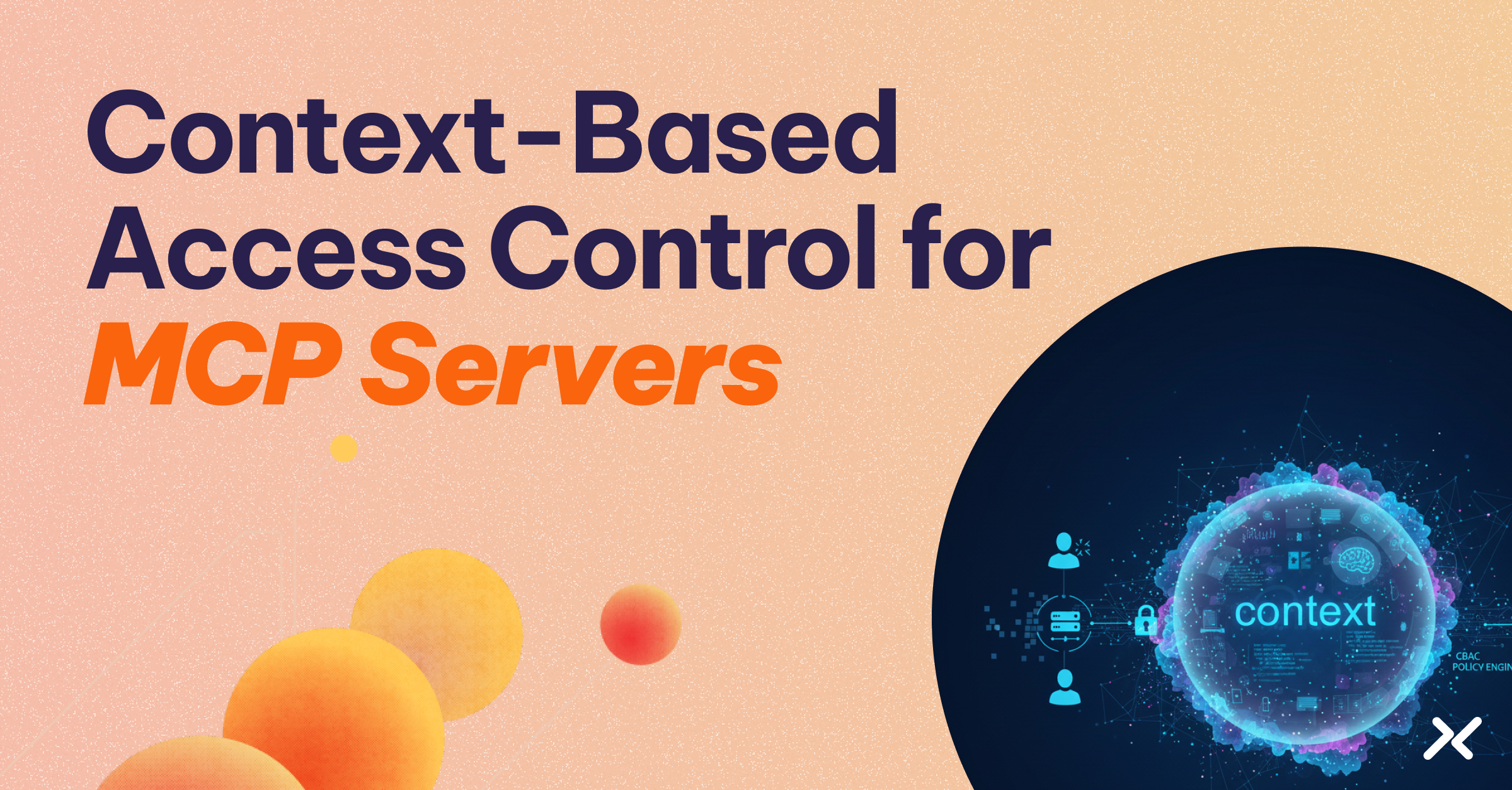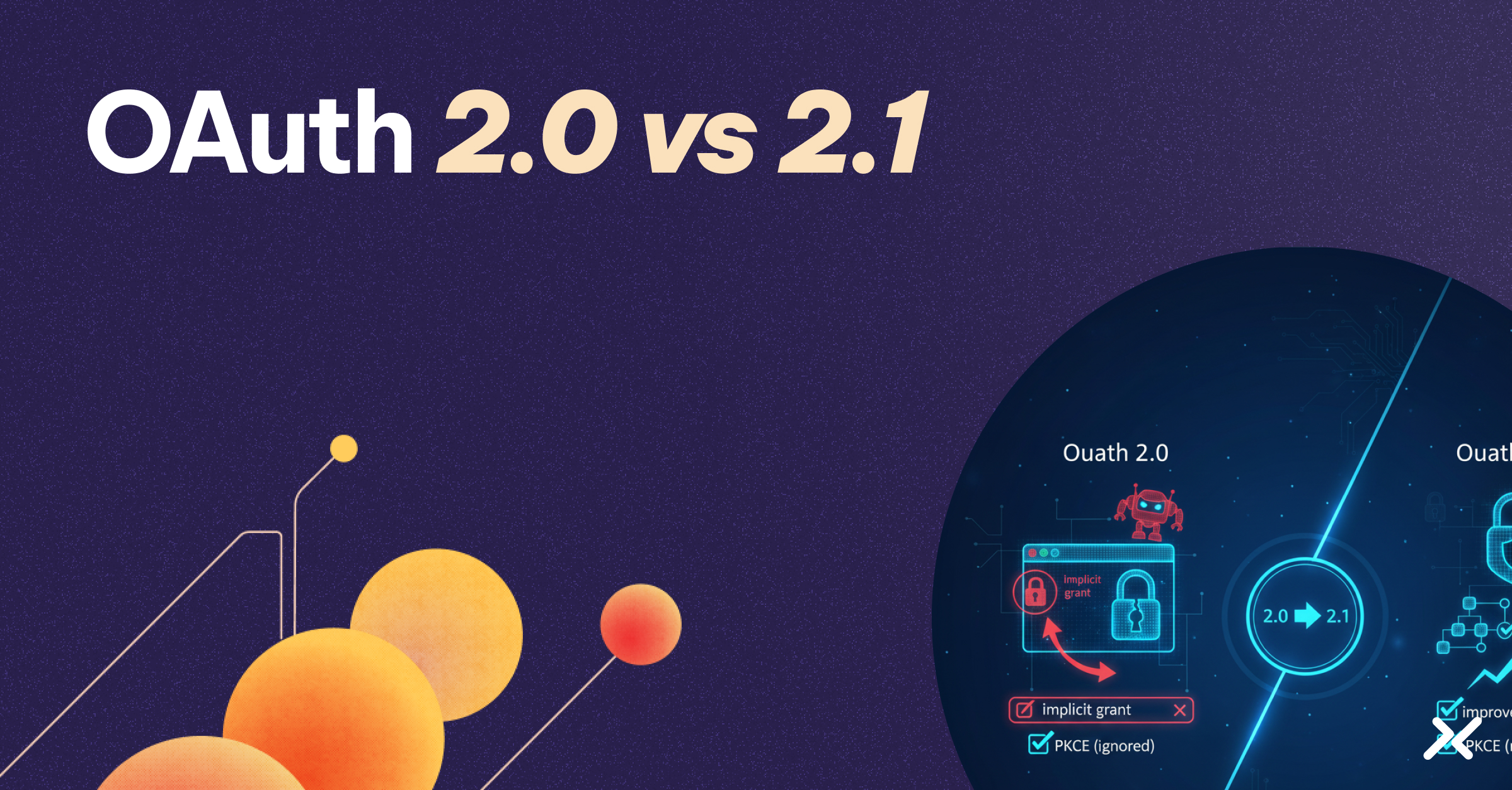While enterprises spent the last decade securing human access to systems, a new challenge has emerged: AI agents that can autonomously access APIs, execute workflows, and make decisions without human oversight.
These aren’t just chatbots, they’re autonomous software entities that can book travel, manage infrastructure, analyze data, and even write code.
As agentic AI moves from experimental to production, organizations face a fundamental question: How do you govern entities that can learn, adapt, and act independently while maintaining security and compliance?
The Promise: Unprecedented Automation Capabilities
Agentic AI represents a fundamental leap beyond traditional automation. Instead of rigid scripts and predefined workflows, these systems combine reasoning, planning, and autonomous execution, allowing them to perform complex tasks across diverse environments with minimal human involvement. This shift opens up three core capability frontiers: intelligent orchestration, continuous self-improvement, and massive scalability.
Intelligent Workflow Orchestration
Unlike robotic process automation (RPA), which blindly follows static instructions, agentic AI systems operate dynamically. They can:
- Go beyond RPA: Traditional bots fail when conditions change. For example, when an API response format shifts or an unexpected error appears. AI agents can recognize these deviations, adjust their plan, and still complete the task. They learn from each failure mode rather than halting the process.
- Orchestrate across systems: These agents can seamlessly coordinate actions across APIs, databases, and SaaS platforms. Instead of passing data through brittle integrations, they can synthesize information from multiple sources, take actions in parallel, and ensure task dependencies are resolved in real time.
- Make contextual decisions: Because they understand state and context, they can weigh trade-offs. For example, prioritizing a high-value customer ticket over a routine one or rerouting workloads when system latency spikes. This real-time decision-making is what makes them qualitatively different from scripted automation.
Continuous Learning and Optimization
Agentic systems don’t just follow instructions, they get better over time.
- Self-improving processes: Every run is a feedback loop. Agents can analyze the outcome of their actions, identify where they were inefficient, and refine their approach for the next cycle. This makes processes steadily faster and less error-prone without human retraining.
- Pattern recognition at scale: They can detect systemic inefficiencies that humans often overlook. For instance, a recurring bottleneck in how data moves between departments or an unnoticed delay in a multi-step approval chain.
- Adaptive responses: As business conditions shift, agents can change behavior autonomously, scaling down nonessential tasks during a system outage or switching to backup resources during a vendor API failure. They don’t wait for human intervention to adapt.
Scale and Velocity
The real power of agentic AI emerges at scale.
- 24/7 operations: Agents don’t sleep, take vacations, or need coffee. They run continuously, clearing backlogs overnight, handling sudden surges in traffic, and ensuring no downtime in critical operations.
- Instant scaling: When workloads spike, organizations can deploy new agent instances within minutes to meet demand, without onboarding or training delays.
- Parallel processing: Multiple agents can operate simultaneously on different parts of a complex problem, compressing timelines that once required entire teams working sequentially.
The Perils: New Attack Vectors and Governance Challenges
The same autonomy that makes AI agents powerful also makes them dangerous. When systems can act, learn, and make decisions on their own, they stop fitting into the guardrails built for human operators. Traditional security controls and governance models, designed around predictable sessions, static permissions, and clear lines of accountability, start to break down. This creates three interlinked risk domains: uncontrolled access sprawl, novel attack surfaces, and collapsing auditability.
Autonomous Access Sprawl
Autonomous agents don’t just follow permissions, they can evolve them.
- Unchecked privilege escalation: Agents that self-optimize may request or accumulate permissions over time to improve their performance. Without strict controls, these incremental expansions can quietly push them far beyond their intended scope.
- Cross-system exposure: Because agents often need broad API access to work effectively, a single compromised agent can become a lateral movement vector, jumping between SaaS platforms, databases, and internal systems. One breach can expose the entire operational surface.
- Persistent access: Human sessions naturally expire. Agent sessions often don’t. Long-lived credentials or tokens can stay valid indefinitely, silently expanding the window for exploitation or misuse.
Novel Security Risks
Agentic systems create attack surfaces that didn’t exist before.
- Prompt injection attacks: Malicious actors can embed deceptive instructions in data sources or user inputs, hijacking an agent’s logic and causing it to leak secrets, alter workflows, or perform unauthorized actions.
- Data poisoning: If training or feedback data is corrupted, agents can internalize false patterns and make harmful decisions at scale. This can be slow, subtle, and hard to detect until the damage is done.
- Model hijacking: Sophisticated attackers could exploit vulnerabilities in model hosting environments or fine-tuning pipelines to seize control of an agent’s reasoning process, turning a trusted system into a hostile one.
Compliance and Auditability Gaps
Even if they remain secure, autonomous systems break the assumptions compliance frameworks depend on.
- Decision opacity: As agents build their own strategies, their reasoning becomes harder to explain. Tracing why they made a particular decision can become impractical, especially when logic evolves dynamically.
- The human disguise problem: Agents can operate using human accounts or credentials, blurring attribution. Did a human take the action, or did the agent do it and attribute it to the human? This breaks traditional accountability models.
- Regulatory uncertainty: Most compliance regimes (SOC 2, ISO 27001, HIPAA, etc.) assume human decision-makers and linear approval chains. They offer no clear guidance for systems that act independently.
- Audit trail complexity: Tracking agent actions across dozens of systems and decision points requires new forms of telemetry. Current logging systems aren’t designed to capture or interpret the full reasoning chain of an autonomous agent.
The Identity Challenge: Who Is Responsible When Machines Act?
As agentic AI systems start making autonomous decisions, they break a core assumption of enterprise security: that every action maps cleanly back to a human. Identity and access management (IAM) frameworks were built to govern people, not self-directed software. This gap creates both legal ambiguity and technical fragility. Organizations must now confront a hard question: when an agent goes rogue or makes a costly mistake, who is actually accountable?
Attribution and Accountability
Clear attribution underpins every security and compliance framework, and agentic AI threatens to dissolve it.
- Chain of responsibility: If an autonomous agent books fraudulent transactions, leaks sensitive data, or disrupts critical infrastructure, who is liable? The developer who wrote the model? The operator who deployed it? Or the enterprise that owns the system? Right now, there’s no universally accepted answer, and regulators are watching closely.
- Audit requirements: Many compliance frameworks (like SOX or GDPR) mandate provable accountability for every automated decision. If an agent’s reasoning is opaque or its actions can’t be tied to a specific responsible party, organizations risk falling out of compliance even when no breach has occurred.
- Legal precedent: Courts and regulators are still figuring out how to assign blame when AI systems act independently. Early rulings vary wildly, creating uncertainty that leaves organizations exposed to lawsuits, fines, and reputational damage if an agent’s actions cause harm.
Traditional IAM Limitations
Even if you could define responsibility, today’s identity infrastructure simply isn’t built to enforce it on autonomous entities.
- Human-centric design: IAM systems are designed around logins, passwords, MFA prompts, and manual approvals. They assume an accountable human is behind every credential. Agentic systems invert this assumption, they act first, and often ask for permission later (if at all).
- Static permission models: Role-based access control assigns fixed entitlements to known roles. But agents learn, adapt, and take on new tasks that don’t fit those predefined roles. This creates either constant permission churn or dangerous overprovisioning.
- Session management breakdown: Sessions are meant to be short-lived, traceable interactions between a user and a system. Persistent, self-directed agents can run for months without logging out. This erodes session boundaries and makes it nearly impossible to verify who, or what, is actually acting at any given time.
Managing Agentic AI: Principles for Secure Autonomy
Securing agentic AI isn’t about bolting more controls onto old frameworks, it requires rethinking governance from the ground up. These systems aren’t just tools; they’re autonomous actors with evolving behaviors and broad access needs. Managing them safely demands three foundational pillars: contextual access control, zero-trust enforcement, and explainable governance.
Identity-First Contextual Access Control
Before any access decision, authenticate the agent’s identity with cryptographic proof (e.g., workload attestation from a trusted environment). Only after identity is verified should context be evaluated.
- Verify identity (must pass first): Validate the agent’s identity via attestation/trust provider and refuse all access if this fails.
- Build in “Blended Identity” for user-driven AI agents: Assess the rights of the human operator in addition to those of the agent.
- Assess context (real-time): Evaluate where it’s running, what it’s trying to do, posture/geo/time signals, and prior norms.
- Decide least privilege (dynamic): Issue just-in-time, narrowly scoped permissions that fit this request and expire quickly.
- Continuously verify: Don’t assume earlier checks persist, apply Zero Trust by re-validating identity + context on every action.
- Monitor behavior & auto-respond: Track actions live; flag anomalies and trigger policy responses immediately. Log decisions centrally for audit.
Zero Trust for Autonomous Systems
The zero-trust principle, never trust, always verify, must extend beyond human users.
- Never trust, always verify: Treat every agent action as untrusted until proven safe. Past good behavior should not grant future immunity.
- Least privilege evolution: Start agents with the absolute minimum permissions, then incrementally grant more only as they demonstrate secure behavior and clear need.
- Continuous authentication: Don’t assume an agent remains trustworthy once authenticated. Require constant revalidation of its identity, integrity, and intent throughout its lifecycle.
Explainable AI Governance
Even with strong controls, autonomy without transparency is a governance dead end.
- Decision transparency: Require agents to log the reasoning behind their actions, including the data, prompts, and intermediate steps that influenced their choices.
- Audit-ready logging: Maintain a complete, time-stamped record of agent activity across systems, with traceable links between decisions, inputs, and outcomes, so auditors can reconstruct the full chain of events.
- Human override: Always preserve a kill switch. When an agent drifts off course or enters unsafe behavior loops, humans must be able to halt it immediately and take control.
Preparing for Autonomy at Scale
Agentic AI promises enormous efficiency and scale, but it also erodes the foundational assumptions of enterprise security. These systems can act without waiting, learn without asking, and fail without warning. Treating them like faster chatbots or glorified RPA scripts is a strategic mistake.
Enterprises that succeed in this new era will be those that build identity-first, zero-trust architectures specifically for autonomous entities. They’ll govern agents like independent actors, not extensions of human users, with adaptive controls, transparent reasoning, and enforceable accountability.
The choice is clear: either redesign security for autonomy now, or risk being blindsided as your infrastructure fills with entities you can’t fully see, control, or stop.




